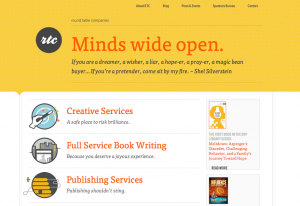The past decade has seen the marketing communications industry increasingly emphasize the importance of storytelling as a way for brands to better communicate with their audiences.

From logo and corporate colours, to website content and advertising campaigns, to staff members and business cards, everything about an organization is now considered a part of its overall brand story. Even the way people feel about a brand gets fed back into it.
In fact, the “brand as storyteller” has become such a prevalent model — such a commonly used buzzword — that we are starting to lose track of the powerful insight that inspired it in the first place: A brand that fails to be uniquely engaging and memorable risks being just another commodity.
But with millions of brands telling millions of stories, the effect of marketing narratives on audiences is bound to eventually wear off — leaving some brands undifferentiated, or worse, ignored.
Which brings us to where we are today, at the tail end of the storytelling trend, and presents us with an important question: What’s the next chapter for marketers?
Download Now: 150+ Content Creation Templates
[Free Kit]
The Need to Move Beyond Simply Telling Stories
Unlike traditional benefits-focused marketing, brand storytelling has been successful at providing audiences with scenarios, characters, and messages they can relate to on a personal level. It works because it aims to bring you in first, and sell second.
However, stories, by their very nature, are also governed by strict rules and therefore limited in their potential for engagement. They always occur in the past. They always have a beginning and an end. And they always happen to someone other than the audience.
In short, the main shortcoming of storytelling as a marketing model is that it is still a one-way form of communication, with the power to shape narratives and affect outcomes remaining mostly in the hands of brands and their agencies.
And in a world where the competition for attention is fiercer than ever, marketers have no choice but to find ways to let people experience the stories for themselves.
Letting Audiences Take Part in Shaping the Narrative
Earlier this year, Contagious Communications’ Nick Parish sparked my interest when he challenged attendees at the Boomerang digital business conference in Montreal to start looking beyond stories and to shift our focus to becoming “purveyors of experiences”.
Loosely adapted, the argument goes that the rise of branded content marketing, personal media creation tools and real-time social media sharing — to name only a few factors — has set the stage for a major evolution that could see “the experience” emerge as the guiding creative principle for our industry.
And many of the world’s leading brands are already getting in on the action, pushing the boundaries of marketing communications as we know it by creating multi-sensory interactive live experiences that go beyond sight and sound and turn audience members into active and engaged participants.
Take the hidden camera stunt created to promote the 2013 horror movie Carrie, for example. Is there any other way to create an audience reaction as strong as the one experienced by the unsuspecting witnesses of this staged telekinetic event?
Or take Coca Cola’s Small World Machines that invited people in India and Pakistan — two groups used to living with conflict — to share a simple moment of happiness. Could a traditional story-based commercial ever do as much to create cross-border human connections?
Even watching these experiences on video is a memorable experience in its own right, which was without a doubt part of the savvy marketing teams’ plan.
Marketing in the New Age of Experiential
By giving people a role to play and a stage to play it on, this new kind of experiential marketing empowers them to participate in shaping brand interactions and creating unique “first-person” memories that are likely to last longer than any story ever could.
And this is still only the beginning of what we can tentatively call the age of experiential.
Going forward, I see no reason why brands should limit themselves to thinking about experiences in marketing terms. Why not just aim to create life experiences for people? Or better yet, life moments?
Moments that transcend the traditional audience-brand relationship by allowing real emotional connections to happen. Moments so unexpected and exhilarating that people will remember them forever, like a first concert or a first kiss. Moments that are simply too amazing not to share with everyone we know, both online and off.
Because ultimately, that is exactly what being a purveyor of experiences is all about — having your audiences become the storytellers.


![Have Agencies Abused the Term 'Storytelling'? [Interview]](http://53.fs1.hubspotusercontent-na1.net/hubfs/53/00-Blog_Thinkstock_Images/agency-storytelling.png)






